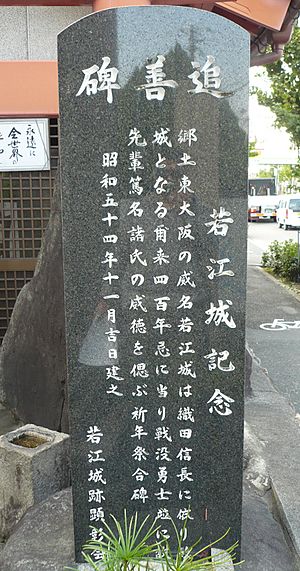Kanshō facts for kids
Kanshō (寛正) was a special name for a period of time in Japan. It's like how we have years, but in old Japan, they also had era names. This era came after an era called Chōroku and before Bunshō.
The Kanshō era started in December 1460 and ended in February 1466. During these years, two emperors ruled Japan: Emperor Go-Hanazono and his son, Emperor Go-Tsuchimikado.
Important Events in the Kanshō Era
- 1460 (Kanshō 1, 9th month): A castle called Wakae Castle in Kawachi Province was destroyed. This happened when a powerful leader named Hatakeyama Yoshinari was forced to leave it.
- August 21, 1464 (Kanshō 5, 19th day of the 7th month): Emperor Go-Hanazono decided to step down from his role. This is called abdication. When he resigned, his son became the new emperor, known as Emperor Go-Tsuchimikado.
Related Topics
- Muromachi period: This was a long period in Japanese history that included the Kanshō era.
- National Diet Library: You can learn more about the Japanese calendar and history on their website. "The Japanese Calendar"

All content from Kiddle encyclopedia articles (including the article images and facts) can be freely used under Attribution-ShareAlike license, unless stated otherwise. Cite this article:
Kanshō Facts for Kids. Kiddle Encyclopedia.
